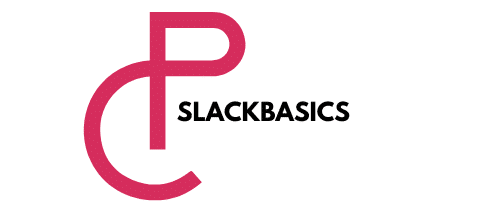The intersection of art and healthcare is an exciting frontier that has come under the spotlight in recent years. The integration of interdisciplinary art projects into healthcare settings has the potential to not only enhance patient well-being but also stimulate creativity. This article will delve deep into how such endeavors can catalyze significant positive health outcomes.
The Therapeutic Benefits of Art in Healthcare
Art has always been a conduit for healing, dating back to the prehistoric times. It is not until recently that we began harnessing its therapeutic benefits within healthcare environments. Here, we explore this idea in detail.
Topic to read : How Does The Use of Thermal Imaging Wearables in Sports Training Prevent Overuse Injuries?
Interdisciplinary art projects involve the convergence of different art forms like painting, music, and drama. When adopted in healthcare settings, these projects create a holistic and therapeutic environment that aids in healing. From reducing stress and anxiety to improving communication and promoting self-expression, art serves as a powerful tool in a patient’s recovery process.
Patients undergoing treatment often experience emotional distress and isolation. Engaging in art projects provides them with a distraction, offering a respite from their condition. It also helps them channel their thoughts and feelings, creating a platform for self-expression. This emotional release can lead to a significant reduction in stress levels, thereby promoting overall well-being.
Have you seen this : Can Engaging in Collaborative Online Gaming Improve Cognitive Flexibility and Problem-Solving Skills?
Moreover, these projects foster a sense of community among patients. Collaborative art projects instill a sense of togetherness and teamwork, mitigating feelings of loneliness and detachment. This goes a long way in improving a patient’s mental and emotional health, consequently aiding in their recovery.
The Power of Art in Encouraging Creativity
Creativity is a vital aspect of human life, often overlooked in healthcare settings. The integration of interdisciplinary art projects into these environments can serve as a catalyst for creativity. Let’s delve into this intriguing facet.
When patients engage in art projects, they immerse themselves in a world of colors, patterns, sounds, and stories. This stimulates their imagination, encouraging them to tap into their innate creativity. Whether they’re painting a canvas, playing a musical instrument, or acting out a scene, they’re given the freedom to create something unique, to tell a story in a way that resonates with them.
Creativity does not just foster self-expression; it also has considerable cognitive benefits. It enhances problem-solving skills, boosts memory, and improves focus. For patients battling conditions that affect their cognitive abilities, such as Alzheimer’s or stroke, engaging in creative activities can serve as effective cognitive therapy.
Moreover, the act of creation is empowering. It gives patients a sense of control, an aspect often lost during hospitalization or treatment. This empowerment greatly contributes to their mental well-being and motivation towards recovery.
Interdisciplinary Approach: Bridging Art and Medicine
The interdisciplinary approach is the linchpin in the successful implementation of art projects in healthcare settings. How exactly does this approach facilitate the merger of these two distinct fields? Let’s find out.
An interdisciplinary approach integrates multiple disciplines, blurring the lines between different domains. In the context of healthcare, it involves the collaboration of medical professionals and artists. Physicians, nurses, therapists, and artists work together to design and implement art projects that cater to the specific needs of patients.
This approach ensures that the therapeutic benefits of art are maximized while considering the medical aspects of a patient’s condition. It fosters a holistic approach to healing, integrating the emotional, mental, and physical aspects of health.
Furthermore, the interdisciplinary approach promotes innovation and creativity in healthcare. When boundaries between disciplines are erased, fresh perspectives emerge. Medical professionals can borrow from the creativity inherent in art to devise novel treatment methods. Artists, on the other hand, can draw from the precision and structure of medicine to refine their artistic techniques. This synergy breathes new life into both art and healthcare, opening up limitless possibilities for patient care and recovery.
The Future of Art in Healthcare
The adoption of interdisciplinary art projects in healthcare settings holds immense promise for the future. It marks a shift from a solely medical approach to a more humanistic and holistic one. But what does the future hold for art in healthcare?
A future with interdisciplinary art in healthcare is dynamic and patient-centric. It would make healthcare environments less intimidating and more welcoming. It would also cater to the emotional and mental health of patients, not just their physical ailments. This would greatly contribute to improving patient satisfaction, enhancing their overall treatment experience.
Furthermore, interdisciplinary art projects could revolutionize the way we perceive and treat mental health. Art therapies could become mainstream treatment options for mental health disorders, offering a creative and therapeutic outlet for patients.
Lastly, the future of art in healthcare is one of collaboration and innovation. The interdisciplinary approach would encourage cooperation between artists and medical professionals, fostering an environment of learning and growth. This would lead to innovative treatment approaches and improved patient outcomes.
In conclusion, the adoption of interdisciplinary art projects in healthcare settings is a new and exciting frontier. It has the potential to enhance patient well-being, stimulate creativity, and revolutionize healthcare. As we move forward, it is crucial to continue exploring and harnessing the incredible power of art in healing.
The Connection of Art Therapy and Improvement in Physical Health
The potential of interdisciplinary art projects to improve mental and emotional health is well-established. But, can the participation in these projects also enhance physical health? Let’s examine this proposition.
Research suggests that art can help mitigate physical pain and discomfort experienced by patients. Engaging in arts-based activities releases endorphins – the body’s natural painkillers – thereby reducing the perception of pain. For instance, music therapy can soothe patients undergoing painful procedures, while drama therapy can improve mobility and coordination in patients with physical disabilities.
Art also aids in neuroplasticity, the brain’s ability to reorganize itself by forming new neural connections. This attribute is particularly beneficial for patients recovering from stroke or traumatic brain injury. By engaging in art therapy, these patients can retrain their brains, improve motor skills, and regain lost functions.
Additionally, art can boost the immune system. Studies reveal that the simple act of creating art can lower stress hormones, such as cortisol, and increase lymphocytes, which help the body combat diseases. This implies that integrating art in healthcare can supplement traditional medical treatments, enhancing their efficiency and improving physical health outcomes.
Conclusion: Art as a Pillar of Holistic Healthcare
The adoption of interdisciplinary art projects in healthcare settings represents a significant stride towards holistic care. The undeniable therapeutic benefits of art, coupled with its ability to trigger creativity, presents an invaluable addition to traditional medical treatments.
Art in healthcare is not just about painting a picture or playing a tune, it’s about creating an environment that promotes healing and wellness. It’s about empowering patients, giving them a sense of control and a platform for self-expression. It’s about acknowledging that health is not just the absence of disease, but a state of complete physical, mental, and social well-being.
Moreover, the interdisciplinary approach opens up pathways for innovation in healthcare. By erasing boundaries between disciplines, it fosters a collaborative environment that encourages learning and growth. This can lead to the development of novel treatment methods, improving patient outcomes and revolutionizing healthcare.
On a final note, the future of healthcare is exciting with the integration of art. It promises a patient-centric approach that is less intimidating and more nurturing. It also highlights the importance of mental health, paving the way for art therapies to become mainstream treatment options. As we embrace this new frontier, the potential of art in healing is only beginning to be tapped.
Therefore, as we continue to explore and harness the power of art in healthcare, we must remember that healing is an art, and the canvas is the human spirit. The colors, patterns, sounds, and stories that we weave into this canvas can significantly enhance the well-being and creativity of patients, lighting their path towards recovery.






